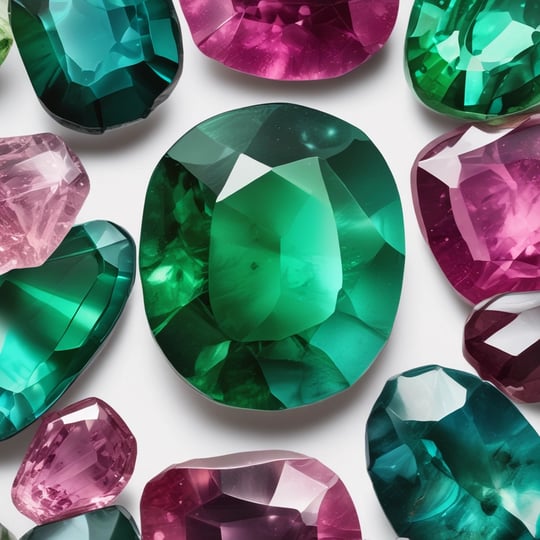Exploring the Allure of Tourmaline
12/8/20242 min läsa


Introduction to Tourmaline
Tourmaline, a captivating gemstone, is renowned for its wide array of colors and unique properties. This spectacular mineral occurs in a variety of hues, ranging from deep black to vibrant pink, blue, and green. Because of its remarkable spectrum, tourmaline has long been adored not just for its beauty but also for its potential metaphysical properties. This blog post delves into the history, characteristics, and significance of tourmaline, showcasing why it is cherished in the world of gemstones.
The Historical Significance of Tourmaline
Historically, tourmaline has a rich and diverse background. It was first discovered in Sri Lanka and was popularly used in various ancient cultures, including the Egyptians who believed that tourmaline could protect against the dangers of the afterlife. They were often used in jewelry and amulets.
Interestingly, the name 'tourmaline' is derived from the Sinhalese word 'turmali,' meaning a mixed gem. This reflects its diverse nature, resonating with different cultures. It wasn't until the 19th century that tourmaline gained recognition in the Western world, especially when a large quantity of the stone was unearthed in Brazil. This discovery helped catalyze its popularity among jewelers and collectors alike.
Characteristics and Varieties
One of the most fascinating aspects of tourmaline is its remarkable variability. Tourmaline is classified into several distinct types based on its color, composition, and crystal structure. The most popular varieties include Paraíba tourmaline, known for its neon blue-green colors, and watermelon tourmaline, which showcases a unique pink center surrounded by green hues.
Tourmaline is a complex silicate mineral consisting of boron; its crystal structure can produce a wide range of colors in a single stone, a phenomenon referred to as pleochroism. This quality allows the gemstone to display different hues when viewed from various angles, adding to its allure and demand.
In addition to its aesthetic appeal, tourmaline is said to possess various healing properties. Many crystal enthusiasts believe that it can promote emotional well-being, creativity, and even physical healing. The stone is reputed to protect against negative energies, making it a popular choice for those seeking peace and balance in their lives.
The Modern-Day Relevance of Tourmaline
Today, tourmaline continues to be a popular choice among jewelers and collectors. Its vibrant colors, unique characteristics, and perceived metaphysical benefits keep it highly sought after in the gemstone market. With its history steeped in mystique and beauty, tourmaline is an essential stone for both contemporary jewelry designs and compelling collector's pieces.
As the trends in the jewelry industry evolve, tourmaline remains timeless, retaining its relevance amidst the hustle and bustle of modernity. Each gemstone tells a story and connects with those who appreciate its multifunctional nature — making it a favorite for many.
Ädelstenar
kontakta oss
prenumerera
hello@axinita.com
0730 44 58 55
© 2024. All rights reserved.
Rådhusesplanaden 6 F,
903 28, Umeå
